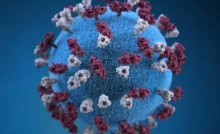Challenges and Advancements in Biopharmaceutical Formulation Development
The field of biopharmaceuticals has transformed the landscape of modern medicine, offering innovative treatments for a wide range of diseases, including cancer, diabetes, and autoimmune disorders. Biopharmaceuticals, which include monoclonal antibodies, gene therapies, and vaccines, are derived from biological sources and are often more complex than traditional small-molecule drugs. As the demand for these therapies continues to rise, there are significant challenges and opportunities in the development of biopharmaceutical formulations. This article delves into the various challenges faced by the industry in biopharmaceutical formulation development, as well as the advancements that are shaping the future of this critical field.
Challenges in Biopharmaceutical Formulation Development
- Stability and Shelf Life
One of the primary challenges in biopharmaceutical formulation development is ensuring the stability of biologics. Biopharmaceuticals, being complex proteins or nucleic acids, are susceptible to degradation due to environmental factors like temperature, light, and oxygen. Proteins, for instance, can undergo conformational changes that may lead to a loss of function. The instability of these biologics can result in reduced therapeutic efficacy or even the production of harmful aggregates, which may cause adverse reactions.
Stabilizing biologics during their shelf life is essential for maintaining their potency and safety. Formulators often face difficulties in identifying the optimal formulation that can protect the drug from physical, chemical, and microbial degradation over extended periods. Preserving the bioactivity of biologic drugs during storage and transportation is a critical factor in the overall success of biopharmaceutical development.
- Immunogenicity and Safety
Immunogenicity refers to the ability of a biologic drug to provoke an immune response in the body. The body may recognize the biologic as foreign and mount an immune attack, potentially causing side effects or diminishing the drug’s therapeutic effect. This is especially relevant in the case of monoclonal antibodies and recombinant proteins, which are derived from non-human sources or engineered in the laboratory. The immune response may lead to severe allergic reactions or the formation of neutralizing antibodies, which can render the drug ineffective.
Mitigating immunogenicity is a critical consideration in the development of biopharmaceutical formulations. Developers must design biologics that minimize their potential to trigger an immune response. This requires understanding the structure and immunogenic regions of the biologic, as well as the patient population that will be treated. Advancing technologies such as protein engineering and humanization of therapeutic antibodies have proven effective in reducing immunogenicity, but it remains an ongoing challenge in formulation development.
- Solubility and Bioavailability
Solubility is another significant challenge in biopharmaceutical formulation development, particularly for peptide-based and protein-based drugs. Many biologics are poorly soluble in aqueous solutions, which can limit their effectiveness. Solubility issues are especially prominent for drugs that need to be administered intravenously or via injection, as they require a formulation that can be easily absorbed by the body without causing irritation or discomfort.
Moreover, bioavailability, or the extent to which a drug reaches its site of action, can also be a challenge for biologics. Some biopharmaceuticals require specific delivery systems, such as liposomes, nanoparticles, or sustained-release formulations, to ensure proper absorption and therapeutic effect. Overcoming the barriers to solubility and bioavailability requires innovative formulation strategies, including the use of excipients, surfactants, or novel delivery technologies.
- Manufacturing and Scalability
The production of biopharmaceuticals is inherently more complex than the manufacturing of small-molecule drugs. Biologic drugs are typically produced using living organisms, such as bacteria or mammalian cells, through processes like recombinant DNA technology or cell culture systems. These production methods are resource-intensive, requiring strict control over conditions such as temperature, pH, and oxygen levels to ensure optimal product yield and quality.
Scaling up the production process from laboratory to commercial-scale manufacturing is often a challenging and costly endeavor. Even small variations in the production environment can lead to batch-to-batch variability, impacting the consistency and quality of the final product. Moreover, the cost of producing biologics is considerably higher than that of traditional drugs, which can limit access to life-saving treatments, particularly in low- and middle-income countries.
Efforts to streamline manufacturing processes, reduce costs, and increase scalability are crucial in making biopharmaceuticals more accessible to the global population. Advancements in bioreactor technology, continuous manufacturing, and cell culture optimization are contributing to overcoming these challenges. Additionally, new technologies such as gene editing and synthetic biology are expected to revolutionize biopharmaceutical manufacturing, making it more efficient and cost-effective.
- Regulatory Hurdles
Regulatory approval is a significant challenge in biopharmaceutical formulation development. Regulatory agencies such as the U.S. Food and Drug Administration (FDA), the European Medicines Agency (EMA), and others have strict guidelines and requirements for the approval of biologic drugs. The complex nature of biologics often means that they are subject to more rigorous testing and scrutiny than traditional pharmaceuticals.
The approval process for biologics can be time-consuming, requiring extensive preclinical and clinical testing to demonstrate the safety, efficacy, and quality of the drug. This often results in longer development timelines and higher costs. Additionally, the regulatory landscape for biologics continues to evolve, with new guidelines and regulations being introduced to address the growing variety of biologic therapies, such as gene therapies and cell-based treatments.
Navigating these regulatory challenges requires close collaboration between formulators, manufacturers, and regulatory bodies to ensure that biologics meet the necessary standards. The development of streamlined regulatory pathways for biosimilars (biologic drugs that are similar but not identical to existing biologics) has been a significant advancement in this area, providing faster access to affordable therapies for patients.
Advancements in Biopharmaceutical Formulation Development
- Nanotechnology and Drug Delivery Systems
Nanotechnology has emerged as a powerful tool in overcoming many of the challenges associated with biopharmaceutical formulations. Nanoparticles, liposomes, and micelles are being used as carriers for biologic drugs, improving their solubility, bioavailability, and targeted delivery. These nanocarriers can protect biologics from degradation, enhance their stability, and improve their pharmacokinetics, allowing for more effective and sustained release of the drug.
For example, liposomal formulations have been used to deliver chemotherapy drugs, antibodies, and vaccines. By encapsulating these biologics in lipid-based carriers, the drugs can be delivered more efficiently to the target site, reducing side effects and improving therapeutic outcomes. Nanotechnology also holds promise for the delivery of gene therapies, where precision and controlled release are critical to the success of the treatment.
- Protein Engineering and Humanization
Advancements in protein engineering and humanization have played a significant role in improving the safety and efficacy of biologics. By modifying the structure of proteins, researchers can create versions that are less likely to provoke an immune response, reduce immunogenicity, and increase stability. Monoclonal antibodies, for example, have been humanized to reduce the likelihood of causing allergic reactions in patients.
In addition, the ability to engineer proteins with specific properties, such as increased solubility or enhanced binding affinity, has opened up new possibilities for biopharmaceutical development. These advancements have led to the creation of more potent and targeted biologic drugs, particularly in the treatment of cancer and autoimmune diseases.
- Biosimilars and Biobetters
The development of biosimilars and biobetters is another advancement that has transformed the biopharmaceutical landscape. Biosimilars are biologic drugs that are highly similar to existing, approved biologics, while biobetters are modified versions of existing biologics with improved properties, such as better efficacy or reduced side effects.
Biosimilars offer a cost-effective alternative to expensive biologic drugs, increasing patient access to life-saving treatments. The regulatory approval process for biosimilars has become more streamlined in recent years, making it easier for companies to bring these therapies to market. Biobetters, on the other hand, represent an exciting opportunity for improving the performance of existing biologic drugs, leading to better patient outcomes.
- Continuous Manufacturing and Process Optimization
Continuous manufacturing is a promising advancement in the biopharmaceutical industry, enabling more efficient and scalable production of biologic drugs. Unlike traditional batch production, continuous manufacturing allows for a steady flow of raw materials and products through the production process, reducing costs and improving consistency.
Advancements in process optimization and automation have made continuous manufacturing more viable for biopharmaceuticals. This approach is expected to lower the cost of biologics and increase production capacity, making it easier to meet the growing global demand for these therapies.
Biopharmaceutical formulation development faces numerous challenges, from ensuring stability and safety to overcoming issues related to solubility, bioavailability, and manufacturing. However, ongoing advancements in technology, protein engineering, drug delivery systems, and regulatory pathways are paving the way for the next generation of biologic therapies. As the industry continues to innovate and evolve, the potential to improve the lives of patients worldwide through the development of safe, effective, and affordable biologics has never been greater.









